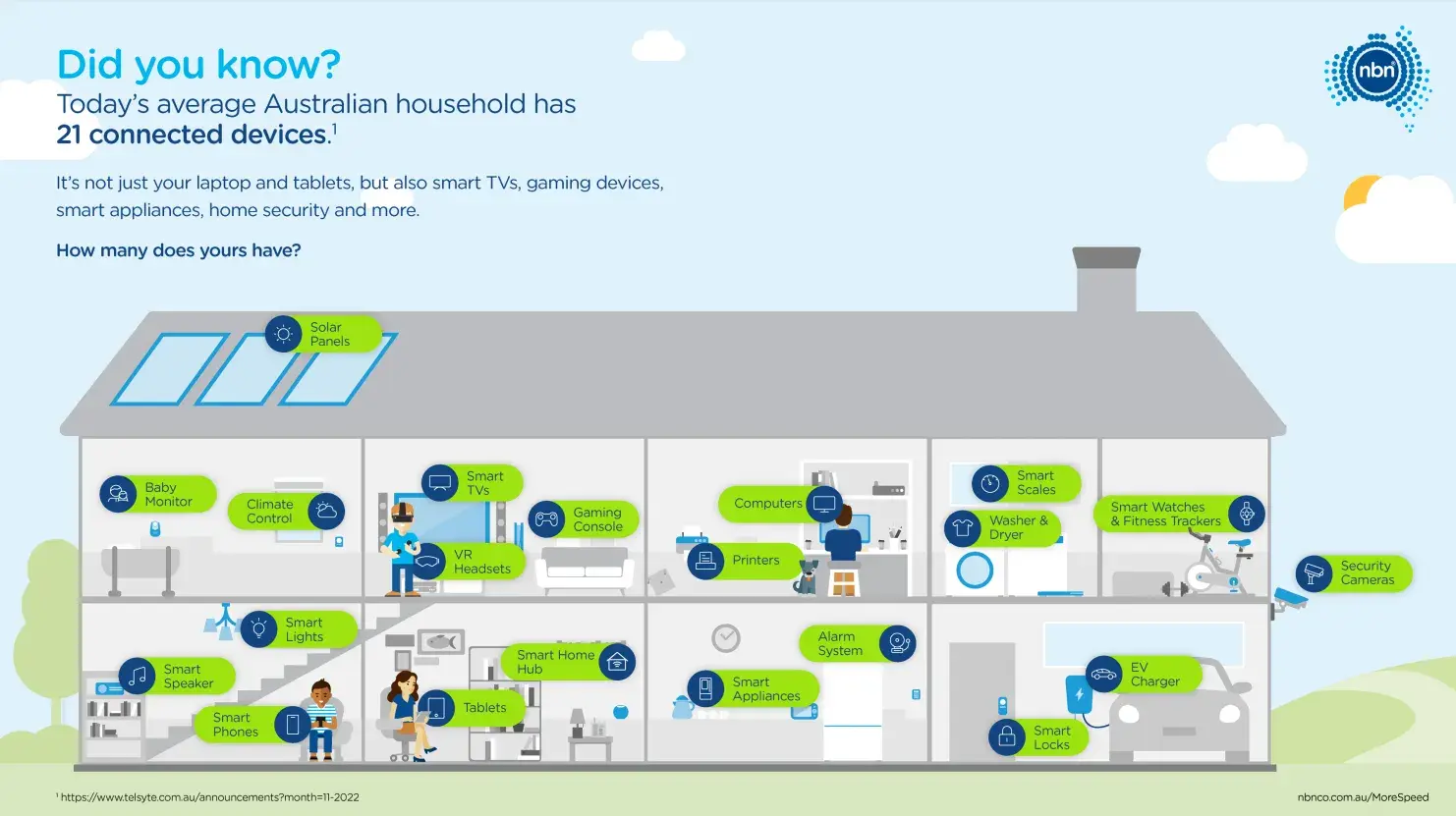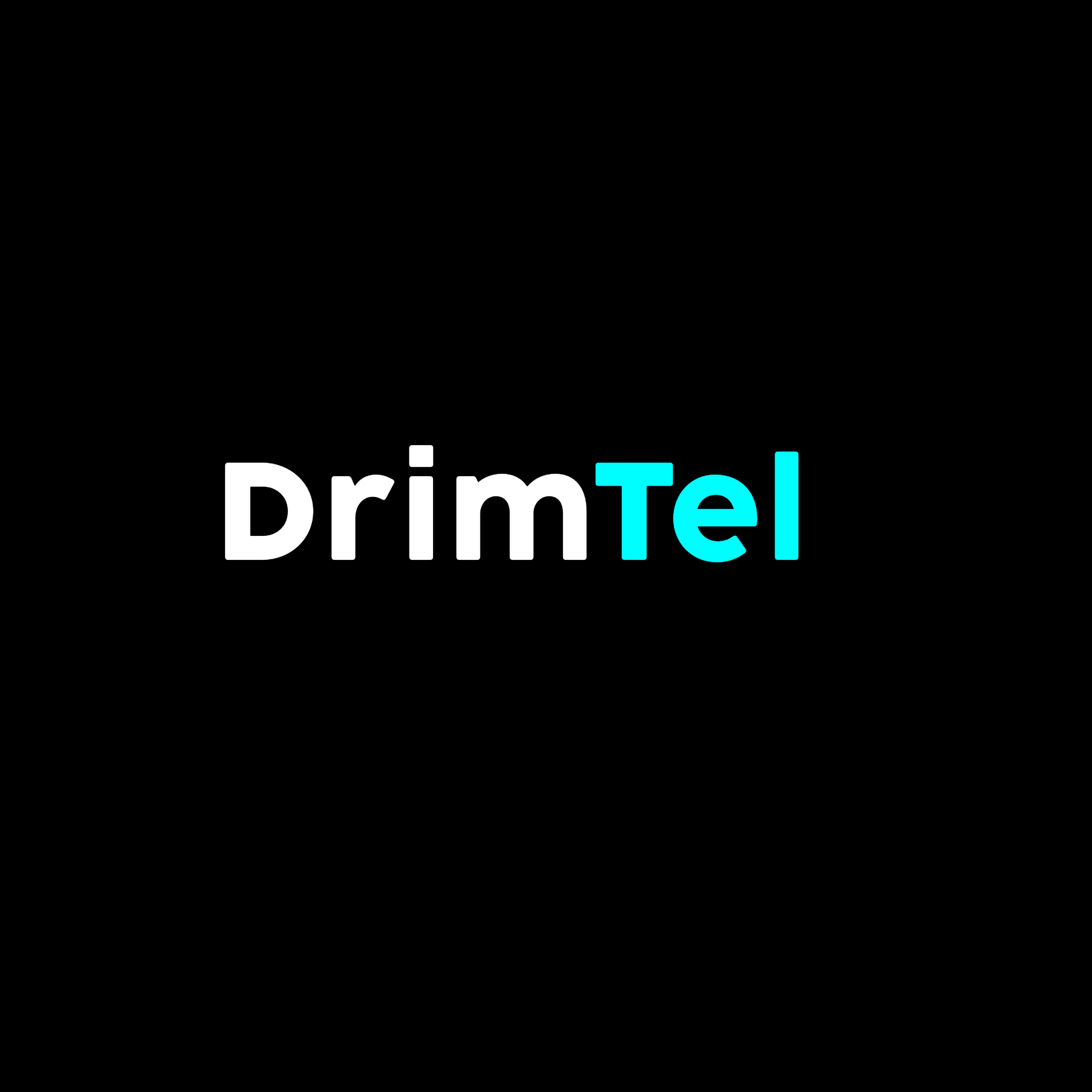There are more choices in nbn® plans than ever before but picking one that suits you can be daunting.
Your ideal plan depends on a few factors, and we’re going to run through them to help you get an idea of what you need.
Understanding bandwidth and speed
First, we need to know what bandwidth and speed are.
Bandwidth is the maximum rate of data transfer your internet plan has assigned to it, and it’s shown in ‘Mbps’ (megabits per second). When looking at an internet plan, the numbers – like 100Mbps/40Mbps – refer to the amount of download and upload bandwidth on that plan.
Speed is the measure of how fast the rate of data transfer is (also in Mbps), whereas bandwidth is the limit of how much data can be transferred. Think of it as bandwidth being a road (how much traffic it can carry) and speed being how fast you can go down it.
Imagine you're on a 25 Mbps plan – this is similar to navigating a suburban street. When you're the only one using it, you can travel at your preferred speed without a hitch.
However, introduce a few more vehicles and perhaps a large truck (representing other household members or devices using the internet), and your 25 Mbps street becomes congested. On the other hand, if this were a multi-lane highway (a higher-bandwidth plan), traffic would flow more smoothly and vehicles could move faster.
Every device in your household that connects to the internet takes up a portion of bandwidth when in use. The size of that portion hinges on the speed required for the device to perform its activity.
Here are some common activities, and a rough guide on the minimum speed they need:
| Type of activity | Minimum speed needed |
|---|---|
| General browsing and email | 1 Mbps |
| Downloading files | 10 Mbps |
| Social media | 1 Mbps |
| Streaming Ultra HD (4K) video | 25 Mbps |
| Streaming HD video | 5 Mbps |
| HD video teleconferencing | 6 Mbps |
| HD personal video call | 1.5 Mbps |
| Gaming (online multiplayer) | 4 Mbps |
Source: Federal Communications Commission
How many devices and people do you have?
According to NBN, the average Australian household has a whopping 21 devices connected to it! That might be higher than you expected, but with the rise of the ‘smart home’, all kinds of devices are connected to the internet. This includes TVs, solar panels, baby monitors, and even washing machines!

Image source: NBN Co
Smart devices that don't continuously download or upload data—like security cameras, microwaves, or solar panels—typically don't use much bandwidth. However, issues arise when other devices require bandwidth that, when combined, exceeds the total available on your plan.
The number of people in your household is also a significant factor, as more people generally equates to more devices, increasing the likelihood of exceeding your bandwidth capacity.
Hot tip: If you are finding that your internet is only sometimes overloaded, you can prioritise certain applications. Most modern routers have a feature commonly known as Quality of Service (QoS). This means when the activities being run by devices are fighting over bandwidth, you can prioritise which get the speeds they need – no more PlayStation slowing down your work calls! Check your router’s manual for more info.
What are your internet habits?
Understanding when and how your household uses the internet is crucial for selecting the right plan. Internet service providers (ISPs) report the highest traffic between 7-11pm when most people are at home. This period is optimal for assessing your total bandwidth usage.
To do this, try accessing your router’s online dashboard or mobile app (this may vary by brand and model, so search for instructions specific to your router). Within the dashboard, look for a section labeled 'Clients' or something similar, which will display all connected devices and their data use.
If accessing your router is tricky, don’t fret—good old pen and paper can still help! List all the devices actively in use, including smart devices, and jot down the activities performed on each.
Referencing the table above, sum up the activities by their respective speeds to estimate the bandwidth needed for peak usage.
Your internet habits also play a role in your work life. If you work from home, you might require reliable video conferencing and fast file downloads. Consider these needs when selecting a plan.
What speeds can you get?
Difference in technology means not all households can access high-speed plans. Many still use the original copper telephone cabling to connect to external infrastructure, which isn’t as good as newer fibre optic cabling. You can see what connection type and plans are at your house here, or learn each type’s capabilities in this blog.
The good news? NBN is rolling out their Fibre Connect program to more areas across the country, so high-speed internet isn’t too far away! As for those who rely on Fixed Wireless, you’re also getting an upgrade. By the end of 2024, over 750,000 homes and businesses will be able to access triple-figure speeds thanks to new 4G and 5G technology.



